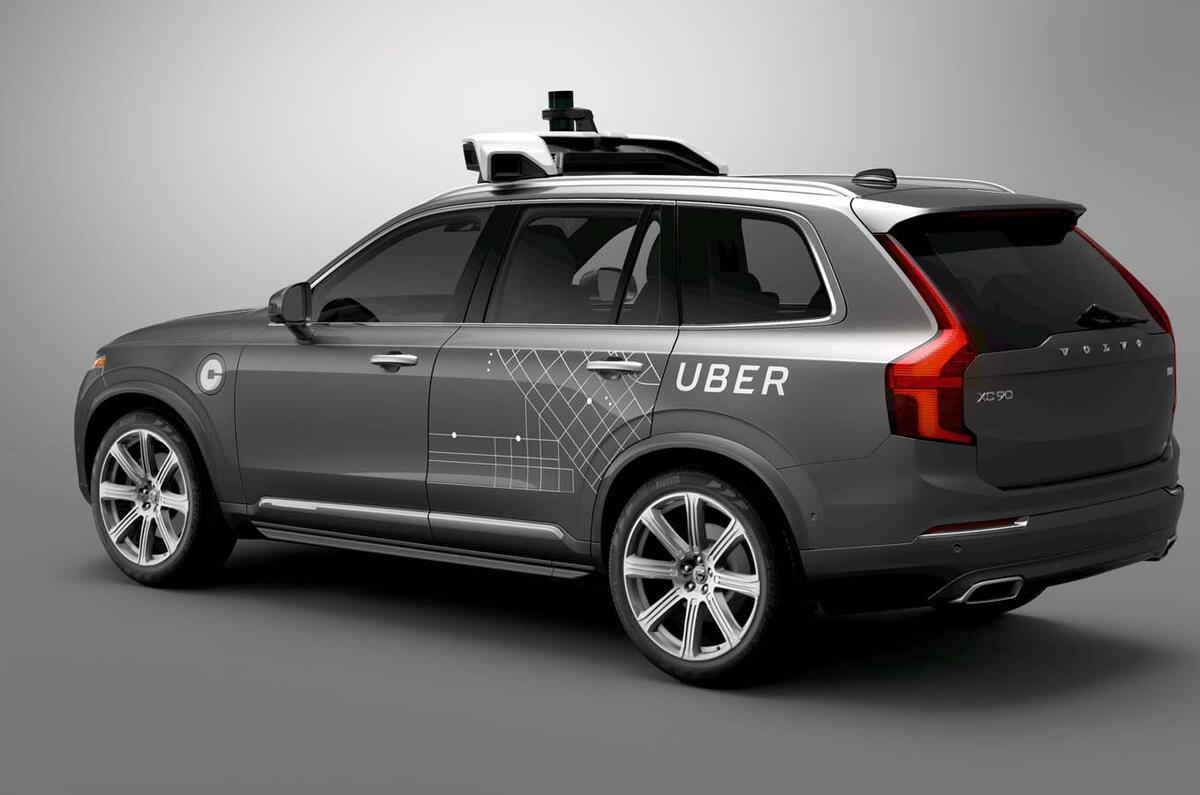The US National Transportation Safety Board (NTSB) has outlined the events leading up to the fatal collision between an autonomous Uber vehicle and a pedestrian on 18 March.
The board states in its preliminary report, which does not give a probable cause of the incident, that the pedestrian was “dressed in dark clothing, did not look in the direction of the vehicle until just before impact and crossed the road in a section not directly illuminated by lighting”, as well as “the pedestrian was pushing a bicycle that did not have side reflectors, and the front and rear reflectors, along with the forward headlamp, were perpendicular to the path of the oncoming vehicle.”
Tests on the pedestrian determined a positive result for methamphetamine and cannabis, and she crossed in an area where signage warned to use a designated crossing 360 feet away from the crash site.
The Volvo XC90 test vehicle that struck the pedestrian was equipped with Uber’s autonomous driving systems, which disable the car’s factory-fit automatic emergency braking function when the car is in computer control mode in order to diminish erratic behaviour while the systems were under test.
The pedestrian was detected by Uber’s systems six seconds before impact, and the car determined that emergency braking was required 1.3sec before impact. No faults or diagnostic messages were present at the time of the crash.
“The vehicle operator is relied on to intervene and take action. The system is not designed to alert the operator,” says the NTSB.
The operator used the steering wheel less than one second before impact and braked less than one second post-impact. She disclosed to NTSB that she was monitoring the self-driving interface.
An Uber spokesman has been approached for comment.
Uber shut down its autonomous vehicle testing programme in the US state of Arizona two months after the accident. Following Arizona governor Doug Ducey's decision to suspend Uber's testing rights in the state, the company has now officially halted the programme. No timeframe has been set for when testing will resume; for now, Uber's focus will be on smaller programmes in Pennsylvania and California.
Uber has come under fire as the operator of the first autonomous vehicle to have been involved in a fatal incident. In a previous letter addressed to Uber CEO Dara Khosrowshahi, Ducey described a video of the incident, in which the self-driving car crashed into a 49-year-old woman, as "disturbing and alarming" and said that it "raises many questions about the ability to continue testing in Arizona".
"As governor, my top priority is public safety," Ducey wrote. "In the best interests of the people of my state, I have directed the Arizona Department of Transportation to suspend Uber's ability to test and operate autonomous vehicles on Arizona's public roadways."
Uber said after the incident that it was "fully co-operating" with the police investigation and has expressed condolences to the victim's family. Police in the city of Tempe, where the incident occurred, are continuing to investigate the incident, along with the NTSB and National Highway Traffic Safety Administration.
Khosrowshahi said via his Twitter account: "We’re thinking of the victim’s family as we work with local law enforcement to understand what happened.”
Uber began self-driving testing in Tempe in February 2017, when it switched operations from California following a dispute with officials in that state. A few months after testing began, an Uber car was involved in an accident with another vehicle, which had failed to stop at a junction. Nobody was hurt.
Tempe mayor Mark Mitchell said: "The city of Tempe has been supportive of autonomous vehicle testing because of the innovation and promise the technology may offer in many areas, including transportation options for disabled residents and seniors.
"Testing must occur safely. All indications we have had in the past show that traffic laws are being obeyed by the companies testing here."
Although there have been crashes involving self-driving vehicles, including a well-documented one involving a Google autonomous car in 2016, Uber's 2018 incident is thought to be the first to have resulted in a fatality.
Read more
